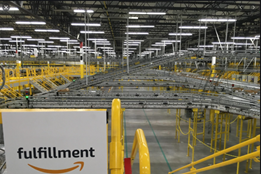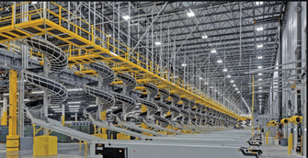Logistical and fulfillment center facilities have been an increased focus for fire sprinkler corrosion prevention as the amount of warehouses increase. In fact, CNBC projects that the US may need another 1 billion square feet of warehouse space by 2025.
This increase represents a big opportunity for fire sprinkler professionals to build expertise in corrosion control in these facilities to grow their client base.
In this article, we'll take a look at the reasons why these facilities are prone to corrosion and what you can do to control corrosion.
Why are Logistical and Fulfillment Center Facilities Prone to Corrosion?
There are 3 main reasons why these centers are prone to corrosion.
1. How they are built
Logistical & Fulfillment Center facilities are prone to pipe failure and obstruction risk due to the very nature of how they are built:
- Enormous size
- High ceilings
- Large volume wet sprinkler systems leading to trapped air
- Schedule 7 & 10 piping with thin walls
Once these systems begin leaking the cost of repairs starts to rack up depending on the location of the leak, and the amount of property loss or damage.
2. Maintenance difficulties
In these types of facilities, you have an array of obstacles in your way to get access for repair and maintenance, including:
- Large racking systems
- High piled storage
- Processing and conveyor equipment
- Interrupting manufacturing processes, requiring a temporary shut-down
- Equipment that may need to be relocated
3. Frequent Fire Pump Testing
Frequent fire pump testing can also expedite the corrosion process.
As soon as these sprinkler systems are drained down, a large volume of oxygen is backfilled into the closed pipe network from the gravity of the water exiting through the open drain. As water is drained, the closed system pulls oxygen back in.
Once the sprinkler system is filled again, you have a large volume of trapped air above the water with submerged black iron.
Here is a simple demonstration of how air pockets increase corrosion.
Below you have a 5-gallon water bucket half-filled with water, and brand-new black iron fittings that were left submerged under the water for one week.
As you can see, the metal rapidly deteriorates and doesn't stop.
When the submerged iron is left in non-flowing water, this gives the oxygen time to dissolve and react with the metal.
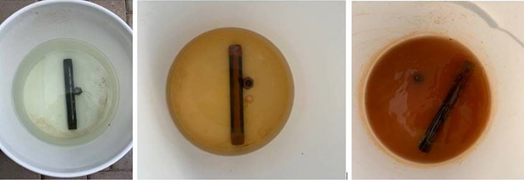
If the water bucket were completely made of black iron, everything below the waterline would be corroded. The bucket photos would look 10x worse, and so would the inside of an actual sprinkler system, as evidenced below.
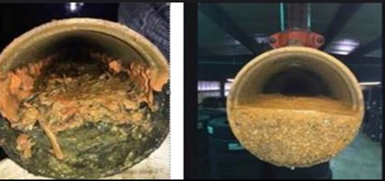
The air pockets sitting in sprinkler systems are like a giant version of our water bucket except they can be hundreds of feet long in some areas of a system. What is interesting is areas that are completely full of water in low points the metal does not corrode. Think of our water bucket filled all the way to the top with water and put a lid on top of it. No free oxygen to dissolve with the non-flowing water in a closed system or tank results in the metal not corroding.
How to Control Corrosion
This is ultimately the result we want to prevent our systems from forming leaks and reducing pipe scaling & debris that can block water delivery. How do we duplicate the water-filled pipe in the bottom right photo below?
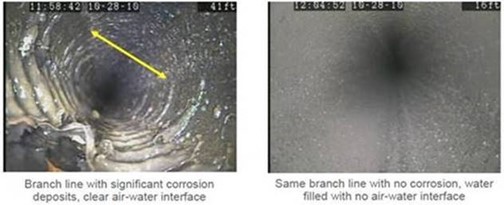
Get the Right Corrosion SOlution
Fire sprinkler contractors can apply Engineered Corrosion Solutions wet pipe nitrogen inerting technology to mitigate corrosion.
Read more about how an Illinois distribution center saved $670,000 by implementing a wet pipe nitrogen inerting solution.


